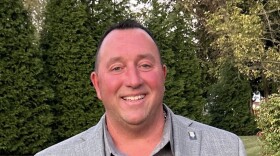Bill Burton: It's time for us to take a look at the Science Behind the Forecast as I am joined by WAVE 3 meteorologist Tawana Andrew. Good morning, Tawana.
Tawana Andrew: Good morning. Today we're diving into something that's very important when it comes to severe weather forecasting.
BB: Yes, it's called CAPE, and no, it's not Cape Cod or even Superman's cape, but cape is an acronym C A P E. Explain please.
TA: So, Convective Available Potential Energy, that is what CAPE is, and it measures the amount of fuel available to a thunderstorm. And it helps meteorologists like me understand how unstable the atmosphere is. So for a thunderstorm to form, you need a couple of things. You need instability, you need moisture, and you need some sort of trigger. And for a trigger, think an area of low pressure or a cold front. Warm air in our atmosphere will rise because it's less dense than cold air. So think like a hot air balloon traveling up in the atmosphere, you have this warm pocket of air that is forced upward by a trigger like a cold front, and it will continue to rise as long as it remains warmer than the surrounding air. Once you have the temperature of that little pocket of air reaching the temperature of its surroundings, then it's going to stop rising. And in the case of our atmosphere in a thunderstorm, that's when you'll reach the top of a thunderstorm. So if there's a substantial temperature difference between the air at the surface and the air at the upper levels of the atmosphere, that gives you a really good idea of how much instability is available. So if there is a large temperature gradient that will allow for air to rise quickly, and it will help thunderstorms to grow. OK, so for scientists, we use CAPE, this is where CAPE comes into play. Scientists measure CAPE in joules per kilogram, so think back to your physics days,
BB: Uh oh, I could be in trouble here.
TA: So you have values ranging for CAPE from zero to more than 5,000. When you have values that are below 1,000 joules per kilogram, then instability is typically low. And usually storms are unlikely to become strong. Once you get values over 4,000 joules per kilogram, you have extreme instability, and you have a lot of very nervous meteorologists who will be watching the forecast closely. So for higher CAPE values, you have a better chance for severe weather like large hail, damaging winds, tornadoes. Low Cape values, you're thinking more of a weak thunderstorm or maybe just a rain shower. And that's it. But it's important to remember with CAPE that the time of year and location [are] very important. So everyone remembers the Mayfield tornado, right? And the mixed layer CAPE values when it was moving through our area were around 1,000 joules per kilogram, which as I mentioned, is typically low, but it was in December when we have this tornado. So that is very, very high for the month of December. So an incredible amount of energy was still available for this dynamic tornado to move through. So CAPE on its own is very, very valuable for us when we're trying to figure out how much instability, how much energy is in the atmosphere for the severe storms to form, but other factors may keep a storm from forming. So we have to look at more than CAPE when putting together an accurate forecast.
BB: So many things go into making a forecast, like CAPE, which we now understand thanks to the latest edition of Science Behind the Forecast with WAVE 3 meteorologist Tawana Andrew. Thanks for the knowledge, Tawana.
TA: Of course.
This transcript was lightly edited for clarity.






